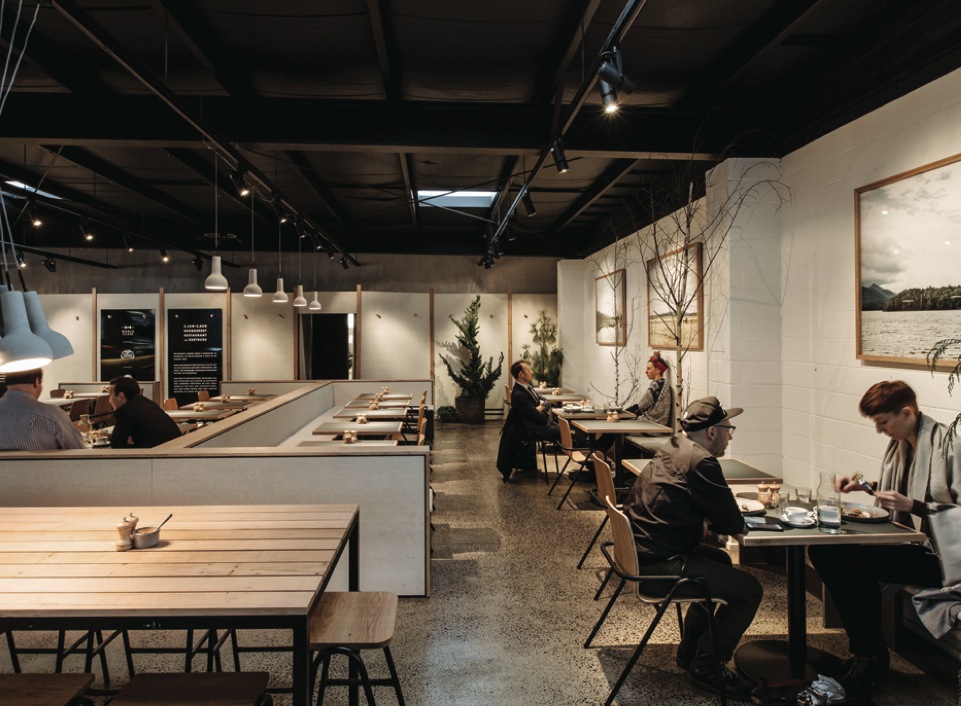Pop-up culture – how brands are staying nimble and finding new audiences with temporary architecture
Share
Pop-up stores, the home to artisans and makers, have fast become a solution for both brands and buildings, writes Marcus Piper in this cross-posting from the launch issue of Mezzanine magazine.
Over the past year the Dessein Furniture Concept Store has proven a valuable investment, popping up on Melbourne’s Market Lane (pictured above), at the DEN Furniture and Design Fair and, more recently, within the Arthur G showroom in Perth.
“As a business we have been able to become more financially nimble than we would otherwise be and take the message on-the- road,” says Michele Chow, founder of the brand, who commissioned DesignOffice to create the modular showroom. With an online brand, where experience is everything, Chow cites a common problem.
“Being locked into the sedentary retail model and the overhead of a long-term lease wasn’t a viable solution for us geographically or financially. The versatility of the installation has definitely contributed to business growth, brand awareness and web traffic.”
Nick Shelton, publisher of Broadsheet, the publication behind the pop-up restaurant bearing the title’s name (pictured below), says it is collective knowledge that makes a serious pop-up a reality. “We are not restaurateurs, so we brought together an outstanding team, including architects, graphic designers, lighting designers, kitchen specialists, bar specialists and a highly experienced general manager to run the operations day-to-day.”
“Broadsheet is a publication, but at its heart it’s a platform for celebrating what we view as the best in Melbourne and Sydney life and culture. The restaurant is an extension of that,” adds Shelton. “We think of the restaurant experience as being another form of content.”
Identifying the challenge of creating a feeling of permanence in a temporary space, under time and budget constraints, Alex Lake of Therefore Studio says: “Despite this inherent disconnect with the notion of a pop-up as a temporary space, our approach was generally to incorporate materials that would be used in a more permanent setting, in a less permanent way. Everything was designed back to smaller and more furniture-like scales to promote speed of construction, portability and eventual reuse.”
In the same way, the Dessein Furniture Concept Store uses modularity and scale to fit various spaces with very short installation and removal time-frames.
For developers and property owners, the appeal of pop-up stores is not simply in keeping cash flowing between tenancies. Short-term retail tenants add a new type of content and engagement, bringing new traffic to spaces that would otherwise lie dormant. Sydney’s Central Park retail development, home to global fashion and footwear brands, invited independent men’s fashion brand Roger Tait Man to take up a semi-permanent residency on its top floor, providing intrigue and a real start for a new business.
Finding new audiences seems the name of the pop-up game and provides creative solutions to a business’ individual problems. The Living Edge ‘Shop before the Shop’ concept in Brisbane, a transitory existence for the brand between premises, has given them a headstart on their shift in location and target audience.
“Previously the business operated in the contract domain in Brisbane ,” says the company’s director, Aidan Mawhinney. “This new location has introduced Living Edge to a wealth of retail customers, who already shop James Street as a destination.”
Of course it is not just retailers and developers who benefit through these temporary existences, Danish restaurant Noma is on its way to Sydney’s Barangaroo precinct. The second leg on its culinary world tour, Noma will pop by in January 2016, for 10 weeks only. A sign that pop-ups are certainly here to stay.
Marcus Piper is editor and creative director of Mezzanine magazine, a new architecture and design title from Niche Media (which also publishes Marketing Mag).
















